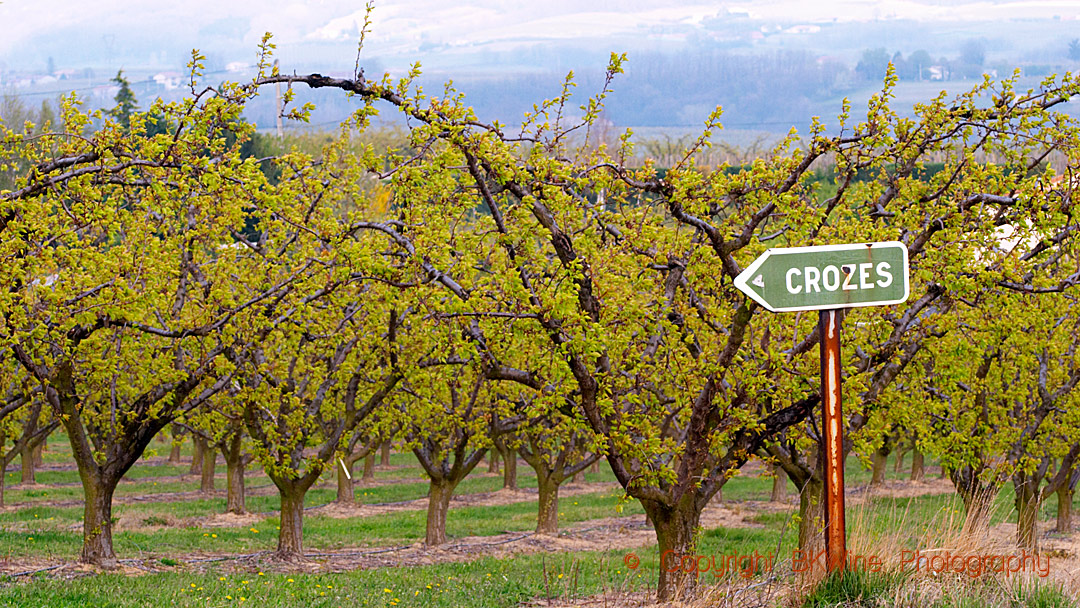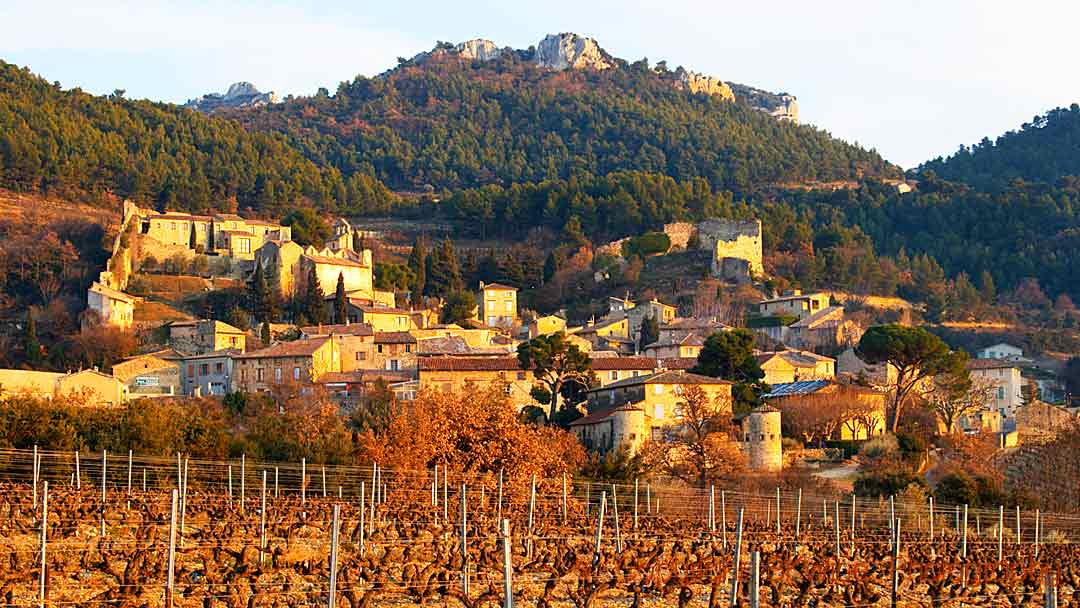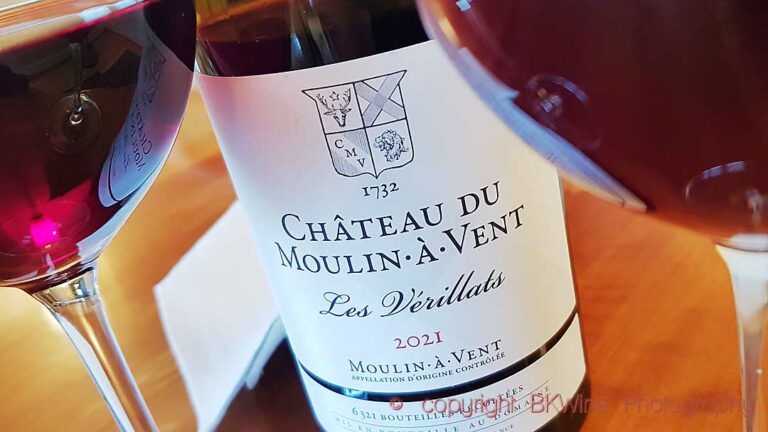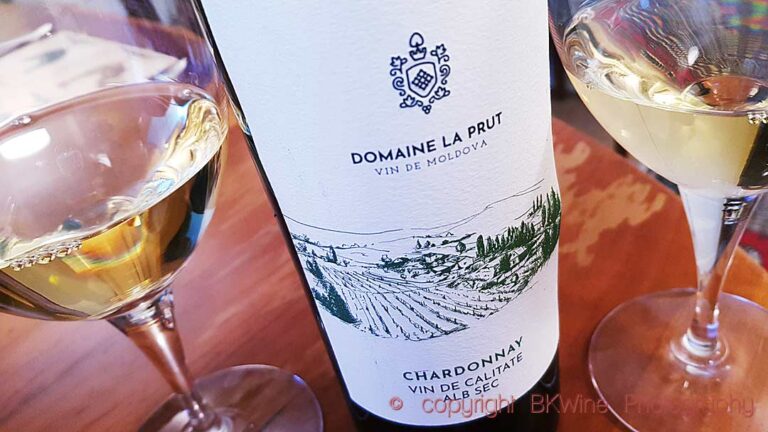The Rhône Valley has an enormous wealth of wines to offer. You will find wines here for most occasions. We have recently tasted wines from three prestigious appellations in the northern Rhône, Hermitage, Côte Rôtie and Condrieu. These are exclusive wines made in small quantities and priced accordingly. But sometimes classic elegans is just what you are looking for.
“BKWine Tastes” is a collection of wines we have tasted recently. It is often samples that producers have sent us to show us what they do or other bottles that we have come across at tastings or on our tasting table in the office.
A wine from the Southern Rhône completes this tasting, a Gigondas, one of the Southern Rhône’s most famous appellations.
Côte Rôtie, Côte Brune et Blonde de Vidal-Fleury 2020
It is hard to imagine that in Côte Rôtie and its neighbour Condrieu, just a few decades ago, fruit growing was more profitable than making wine. Now, it is different, even though the apricot trees are still there. The wines are among the most sought-after in France. With only a couple of hundred hectares and small harvest yields, the volumes are seldom enough for the whole world. The vines grow on steep, terraced and hard-to-work slopes.
Côte Rôtie is the northernmost of the Rhône appellations, located just a few kilometres south of Lyon. It is the only one where they are allowed to blend syrah with viognier; if you want up to 20% (some of the other appellations allow some white grapes in the blend too, but other varieties). Few producers use that much viognier, but several use a few per cent of the white grape to accentuate the finesse. Guigal is the big house, making a third of all Côte Rôtie wine. Guigal owns the prestigious house Vidal-Fleury, whose Côte Brune et Blonde we have just tasted. Read what we have written earlier about Vidal Fleury here.
Côte Brune et Blonde blends grapes grown on iron-rich mica shale (brown) and gneiss and clay-mixed loam (blonde). We recognise the syrah fruit on the nose; it is slightly aromatic with dark berries (blueberries) and violets. The taste is intense with structure, but reasonable tannins, and the wine is even a bit smooth at the end. It is full-bodied and dense, and the ageing potential is there if you want, but it is delicious and excellent to drink already, thanks to the fresh fruit.
Condrieu 2020, Vidal-Fleury
Condrieu is just south of Côte Rôtie. It is a white wine made from Viognier. Condrieu, with its 170 hectares, was for a long time the only place where that grape was found, but around 20 years ago, it began to spread to the southern Rhône, Languedoc and out into the world. But most other viognier wines do not reach the heights of Condrieu. Condrieu is considered one of France’s great white wines. They are often floral with slightly aromatic notes and always luscious.
In Vidal-Fleury’s Condrieu 2020, we have a mouth-watering note of lemon that is quite discreet initially but gradually grows. The taste is expressive and long, with aromatic fruit and some honey. It has a fat mouthfeel and a hint of bitterness at the end. It is delicious, albeit a bit discreet. Take your time with this wine, and you will be richly rewarded.
Hermitage Béryl 2021, Domaine Christophe Pichon
Hermitage and Crozes-Hermitage are the only well-known appellations in the northern Rhône on the left bank (the east side). On the other side of the river is the old town of Tournon, with its ancient castle, and from there, you have a fantastic view across the river towards the town of Tain l’Hermitage and the legendary Hermitage hill. Going up the hill (a bit strenuous) gives you an even more spectacular view. With barely 150 hectares, Hermitage is an exclusive wine with very little production. The grape is syrah, just like in the whole of northern Rhône, often 100%, but you can blend in a little roussanne or marsanne if you want.
Domaine Christophe Pichon has his wine cellar in the village of Chavanay and has 23 hectares in mainly Condrieu, Côte Rôtie, Saint-Joseph and Cornas. He and his sons also make red and white IGP wine.
The nose is fresh, although the fruit feels quite ripe. On the palate, the wine initially feels light in style, but soon, you feel the dense fullness and complexity that is the hallmark of Hermitage wines, with a taste that lasts for a long time. There is some oak character from the 18 months of oak ageing, some tobacco and chocolate, but the fruit dominates. The structure is balanced with well-integrated tannins.
Here you can also read about an unusual experiment Domaine Christophe Pichon did with ageing condrieu in barrels of different types of wood.
Gigondas Tradition Le Grand Montmirail 2022 Domaine Brusset
It doesn’t take long to go from Hermitage down to the southern Rhône valley, but the style of the wines changes. Here, the climate is more Mediterranean and feels much more like southern France. Instead of just syrah and a few white grapes, growers down here have many varieties to choose from; a few dominate, however, grenache, syrah and mourvèdre. The volumes in the South are also much more significant. Sometimes, the wines are unpretentious, but the southern Rhône also has its “cru”. Gigondas is the most famous one after Châteauneuf-du-Pape.
Domaine Brusset is in the village of Cairanne and is run by Laurent Brusset, the fourth generation of winegrowers in the family. He has 70 hectares in Cairanne, Gigondas, Rasteau, Ventoux, and the Côte-du-Rhône appellation. Read what we have previously written about Domaine Brusset here.
In Domaine Brusset’s Gigondas Tradition Le Grand Montmirail Laurent uses have four grape varieties, grenache, syrah, mourvèdre and cinsault. The wine has delicious, fresh fruit aromas; it is elegant and expressive with violets and blackberries. The taste is juicy and refreshing, with ripe fruit, a bit of structure, and a pleasant bitterness. It is balanced and very drinkable right now despite its youth. The wine ferments with wild yeast (Laurent prefers it for all his wines) and skin contact for 21 days with pigeage (pushing down the cap) twice daily. The wine is aged mainly in stainless steel tanks and 30 % in 2–4-year-old 600-litre oak barrels (demi-muid).

















